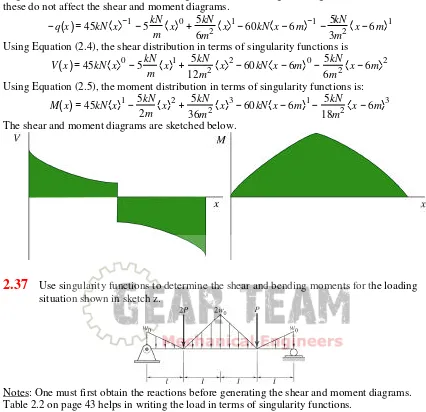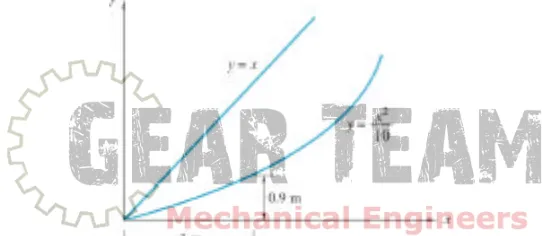Informasi Dokumen
- Sekolah: University
- Mata Pelajaran: Machine Elements
- Topik: Chapter 1 • Introduction
- Tipe: solution manual
- Tahun: 2023
- Kota: City
Ringkasan Dokumen
I. Design Transport Containers for Milk
The design of transport containers for milk in both 1 gallon and 1 liter sizes involves several critical considerations, such as material selection, usability, and environmental impact. The primary goal is to create containers that are easy to handle and pour without spilling, while also being recyclable or capable of harmless combustion. Common materials include paper, plastic, glass, and metal, each offering unique benefits and drawbacks. For instance, the Tetra Pak design is favored for 1-liter containers due to its lightweight and compact nature. In contrast, a 1-gallon container must be designed with an integral handle for ease of use, as dimensions around 156 mm are impractical for single-handed operation. This section emphasizes the importance of innovative problem-solving in engineering design, encouraging students to explore diverse material options and container shapes.
II. Design a Simple Coat Hanger
The task of designing a coat hanger suitable for dry cleaners requires balancing functionality and cost-effectiveness. The hanger must accommodate both winter coats and trousers, which necessitates a robust design. A suggested solution is a triangular steel wire frame that provides sufficient strength and stability. The horizontal bar can be enhanced with a high-friction coating to prevent trousers from slipping off. This design philosophy not only emphasizes the importance of material selection but also highlights the need for cost efficiency in product design, particularly in the dry cleaning industry where operational costs are paramount.
III. Journal Bearings Design Philosophy
The historical use of 'stink additives' in lubricants for journal bearings on train boxcars illustrates a critical design philosophy: the Doctrine of Manifest Danger. This principle advocates for systems to be designed such that failures can be detected prior to catastrophic outcomes. In this context, the odor emitted by overheating bearings serves as an early warning signal, allowing for timely maintenance interventions. This section underscores the significance of incorporating safety features into engineering designs, emphasizing the need for proactive risk management in mechanical systems.
IV. Automotive Towing Safety Chain
The design of automotive towing systems incorporates the principle of redundancy through the use of safety chains alongside tow bars. This design strategy exemplifies a fail-safe approach, ensuring that even if the primary tow bar fails, the towed vehicle remains connected and does not pose a hazard to surrounding traffic. This section discusses the importance of such safety mechanisms in automotive engineering, highlighting their role in enhancing vehicle safety standards and minimizing accident risks.
V. Bearing Selection for Drilling Machines
Selecting the appropriate bearing type for hand-held drilling machines involves analyzing expected usage hours and cost ratios. The comparison between rubber bushings, small ball bearings, and a combination of ball and cylindrical roller bearings highlights the trade-offs between initial cost and longevity. For simple drills, rubber bushings may suffice, while semi-professional and professional drills benefit from higher-quality bearings due to their extended operational life. This analysis emphasizes the importance of aligning product design choices with user needs and performance expectations in engineering applications.
VI. Bearing Life Estimation
Estimating the bearing life for a small ball bearing in a semi-professional drill involves understanding the progression of wear over time. The analysis of spalling and cracking rates provides insight into how precision requirements and potential accidents impact bearing performance. This section illustrates the complexities involved in bearing life calculations and the need for engineers to consider various operational scenarios when designing mechanical systems. The implications of these calculations extend to reliability and maintenance strategies in engineering practices.
VII. Safety Factor for Skis
Determining the safety factor for skis used in downhill competitions requires a thorough analysis of forces and material properties. The maximum force exerted on a ski, combined with varying snow conditions, necessitates a comprehensive understanding of stress and strain principles. By calculating the safety factors based on worst-case scenarios, engineers can ensure that the skis are designed to withstand extreme conditions without failure. This section emphasizes the importance of rigorous testing and validation in the design process to meet safety and performance standards in sports equipment.
VIII. Safety Factor for Crane Hooks
Calculating the safety factor for crane hooks involves assessing the allowable tensile stress in the wire and the potential risks associated with material quality and load control. By analyzing different scenarios, such as poor material control versus well-controlled conditions, engineers can determine appropriate safety factors to mitigate risks in lifting operations. This analysis underscores the critical role of safety factors in engineering design, particularly in applications where human safety and equipment integrity are paramount.
IX. Examples of Fail-Safe and Fail-Unsafe Products
Identifying products that exemplify fail-safe and fail-unsafe designs provides valuable insights into engineering practices. Fail-safe products, such as electric motors and furniture upholstery, are designed to minimize hazards upon failure, while fail-unsafe products, like bungee cords and parachutes, pose significant risks in the event of failure. This section encourages engineers to critically evaluate design choices and consider safety implications in product development, reinforcing the importance of robust engineering principles.
X. Acid Container Design Considerations
When designing acid containers, the trade-off between wall thickness and the inclusion of a reserve tray for leakage containment must be carefully evaluated. The analysis of cost implications and safety factors highlights the need for engineers to balance economic considerations with environmental and safety concerns. This section discusses the importance of proactive design strategies in preventing environmental damage and ensuring public safety, emphasizing the role of engineering in sustainable practices.
XI. Dynamic Viscosity Unit Analysis
Understanding the unit of dynamic viscosity in the SI system requires a grasp of fundamental relationships in physics. By breaking down the unit into its base components, engineers can gain insights into the behavior of fluids under various conditions. This section illustrates the importance of dimensional analysis in engineering, providing a foundation for more complex fluid dynamics concepts and applications.
XII. Kinematic Viscosity Unit Derivation
Kinematic viscosity, defined as the ratio of dynamic viscosity to fluid density, can be expressed in various units. This derivation emphasizes the interconnectedness of physical properties in fluid mechanics and the importance of accurate unit conversions in engineering calculations. By exploring these relationships, engineers can enhance their understanding of fluid behavior in practical applications, such as lubrication and flow analysis.
XIII. Area and Volume Conversions
Converting between different units of area and volume is a fundamental skill in engineering. By applying basic conversion factors, engineers can accurately calculate dimensions and ensure consistency in measurements. This section highlights the importance of precision in engineering calculations, as even small errors in unit conversions can lead to significant discrepancies in design outcomes.
XIV. Cube Volume Calculation
Calculating the dimensions of a cube with a given volume demonstrates the application of geometric principles in engineering design. By deriving the side length from the volume, engineers can ensure that their designs meet spatial constraints and functional requirements. This section reinforces the significance of geometry in engineering, emphasizing its role in optimizing designs for both performance and manufacturability.
XV. Light Travel Distance Calculations
Understanding the distance light travels in various time intervals provides insight into the speed of light and its implications in engineering applications. By performing calculations for picoseconds, nanoseconds, and microseconds, engineers can appreciate the scale of time in relation to distance, which is crucial in fields such as telecommunications and optics. This section highlights the relevance of time-distance relationships in engineering design and analysis.
XVI. Friction Force Calculation
Calculating the friction force between two surfaces separated by a lubricant film requires an understanding of viscosity and surface area interactions. By applying the appropriate equations, engineers can determine the forces acting on the surfaces and ensure that designs account for frictional effects. This section emphasizes the importance of accurate friction calculations in mechanical design, particularly in applications involving moving parts.
XVII. Firefighter Nozzle Force Calculation
Determining the force required to hold a firefighter's nozzle under high water flow conditions highlights the importance of fluid dynamics in practical applications. By analyzing mass flow rates and velocities, engineers can ensure that equipment is designed to withstand operational stresses. This section illustrates the critical role of fluid mechanics in engineering design, particularly in safety-critical applications such as firefighting.
XVIII. Total Weight Calculation of a Car
Calculating the total weight of a car, including passengers and additional water weight, requires careful consideration of significant figures and rounding. This exercise emphasizes the importance of accuracy in engineering calculations, as small discrepancies can impact safety and performance assessments. This section encourages engineers to adopt rigorous calculation practices to ensure reliable outcomes in design and analysis.
XIX. Force Calculation During Car Acceleration Test
Calculating the force driving a car during an acceleration test involves understanding the relationship between mass, acceleration, and resulting forces. By incorporating uncertainties in weight estimates, engineers can assess the accuracy of their calculations and make informed design decisions. This section highlights the significance of thorough analysis in engineering practice, particularly in dynamic systems where multiple variables interact.









